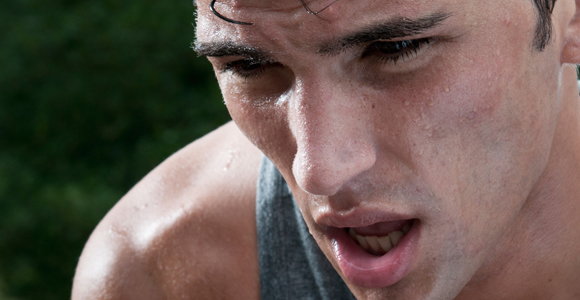If you've done even a little bit of research into CrossFit, you've no doubt heard the word "rhabdomyolysis" being thrown around. It's a disorder that many people associate with CrossFit, but it's actually a problem that can arise when you do any type of exercise too hard.
But what is it?
What is Rhabdomyolysis?
Rhabdomyolysis is a disorder in which your muscles break down and release the contents that they have stored in the muscle cells. The myocyte membrane of the muscle cells are injured, and the part of the muscles that is responsible for producing energy is damaged.
The release of the contents of the muscle cells into the bloodstream can lead to renal (kidney) failure, as the kidneys are unable to eliminate all of the wastes that come from the muscle breakdown. It has been known to be fatal, though it is easily treatable in most cases.
What You Need to Know About Rhabdomyolysis
Rhabdomyolysis isn't unique to CrossFit training, though CrossFit is the workout program most closely associated with the disease. Some of the people at risk of developing the disorder include:
- Military personnel
- Athletes training beyond their conditioning
- Sprinters and Olympic weightlifters
- Marathon runners
- People with genetic factors increasing their risk of rhabdomyolysis
However, if you push yourself too hard, you may end up pushing your muscles beyond what they are capable of doing. It doesn't matter if you've worked out hard for the last 10 years--rhabdomyolysis can set in after just a single workout where you push beyond what your body can do.
Most cases of rhabdomyolysis occur in people that push themselves very hard in workouts that they are new to--which is one reason that it's so closely associated with the high intensity CrossFit workouts. However, any class or workout that you're doing for the first time can lead to rhabdomyolysis if you push your body beyond what it's capable of.
How to Avoid Rhabdomyolysis
It's actually very easy to avoid rhabdomyolysis: don't go all out!
Many trainers will tell you to push yourself to failure, and that's excellent advice. However, if you work at 100 percent intensity every day without rest, your risk of pushing your body too hard and too far is greatly increased. You never know what will be that one thing that will push your body just too much.
Avoiding dehydration is one of the best ways to avoid rhabdomyolysis. Dehydrated muscle fiber are far less elastic, meaning they're more likely to break. Drinking enough water is the key to keeping your muscles working, and will decrease your chance of the problem.
Be wary with "negative" exercises. The "positive" part of the exercise is the curl up, the press up, or the push down. The "negative" exercise is the release back to original position--the lowering of the arm, the bringing of the weight to the chest, or the release of the cable. It's in these exercises that your risk of rhabdomyolysis is greater.
Of course, you can't be afraid to push yourself hard, but be smart about it. You want to give your workouts all you've got, and that's good. However, if it's a new workout, take it easy for the first day. Not only will it prevent DOMS (muscle soreness), but it will help to reduce your risk of rhabdomyolysis from pushing too hard.
Some people get lucky and are born with fit, toned bodies. Andy Peloquin is not one of those people... Fitness has come hard for him, and he's had to work for it. His trials have led him to becoming a martial artist, an NFPT-certified fitness trainer, and a man passionate about exercise, diet and healthy living. He loves to exercise--he does so six days a week--and loves to share his passion for fitness and health with others.




